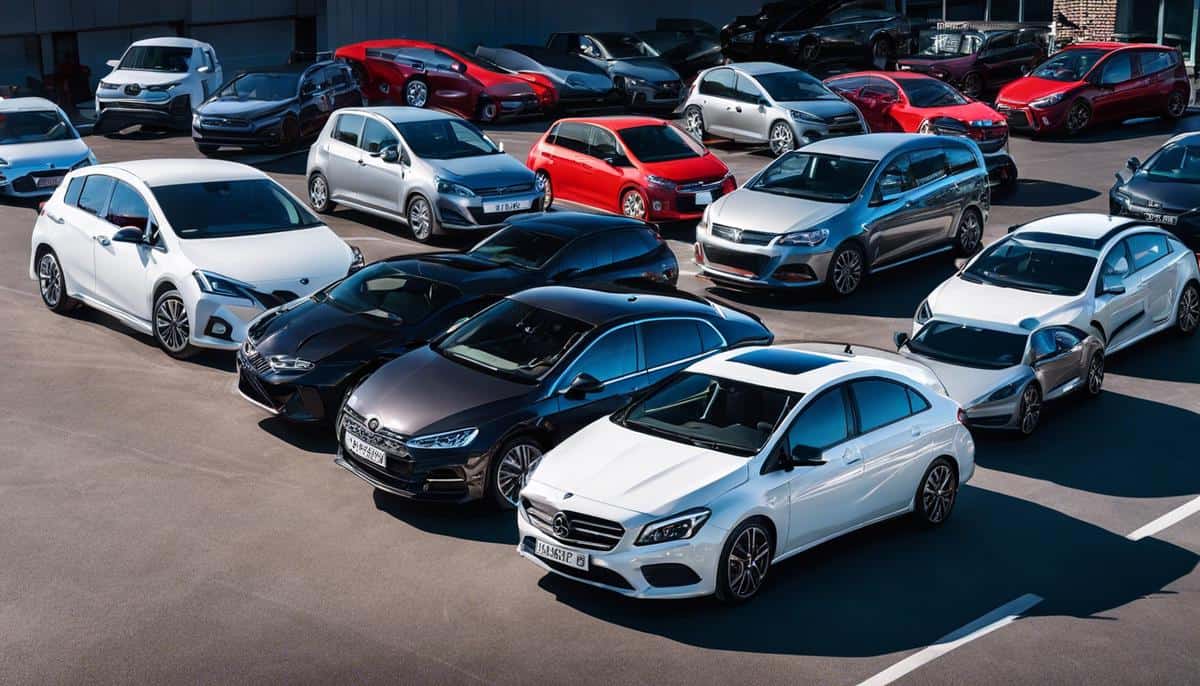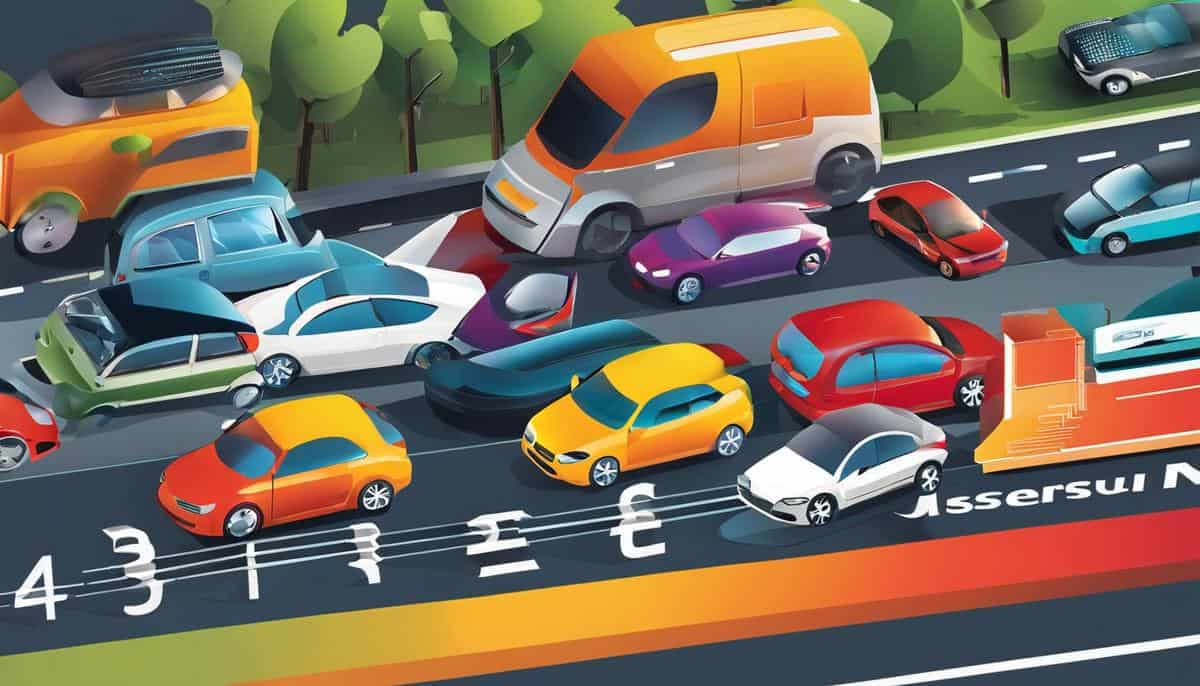
20 Nov Strategic Benefits of Multi-Car Insurance Policies
The world of multi-car insurance policies is one that combines fundamental characteristics, financial impact, market trends, and innovative strategies. They serve as an essential component for managing the risks and efficiency for firms owning several vehicles. Insurance companies have designed multi-car policies not only for simplicity, but also for making real-world financial sense, as they invariably translate to cost savings and potential tax implications. Consequently, understanding these policies and their influence on the market trends can equip businesses with the necessary tools for strategic planning and enhance their competitive advantage.
Essential characteristics of multi-car insurance policies
The arena of corporate vehicle insurance policies is teeming with nuances, and mastery over these intricacies can make a significant difference to a company’s financial performance. Multi-car insurance stands out as an ingenious instrument that blends cost-effectiveness with comprehensive coverage for businesses owning multiple vehicles. The cardinal features of such policies impacting the organization’s bottom line are accumulative discounts and streamlined administration.
Every insurance company rolls out lucrative discounts with multi-car insurance policies. These discounts, which amass with the increase in the number of insured cars, are aimed at incentivizing more coverage. Thus, for a company, consolidating their entire vehicle fleet under one multi-car insurance policy can lead to substantial monetary benefits, directly enhancing the bottom line. In addition, this amalgamation results in a streamlined administrative process, essentially reducing the time and resources dedicated to managing individual policies.
On the other hand, multi-car insurance policies also allow companies to mitigate financial risks associated with multiple vehicles. Should an unfortunate incident lead to simultaneous damage to several company cars, a multi-car insurance policy safeguards businesses from a substantial financial setback. It’s crystal clear: understanding and leveraging the predominant features of multi-car insurance policies can magnify a company’s fiscal resilience, and, ultimately, boost its bottom line.

Financial impact of multi-car insurance policies
Delving deeper into the mechanics of multi-car insurance, one cannot overlook the role of claim management. Businesses that operate numerous vehicles are likely to require frequent engagement with the insurance claim process. With multi-car insurance, the claim procedure becomes significantly streamlined, and this, in turn, makes for smoother operations. Rather than juggling various insurance companies, each with their unique systems and protocols, a business can focus on a single claim process. The efficiency gained in this area can then be redirected to core business operations, positively impacting the overall financial performance.
Additionally, the versatility and customization options offered by multi-car insurance can be financially advantageous. Many insurance providers allow businesses to tailor their multi-vehicle policies according to the varying needs of each vehicle, giving rise to cost-effective insurance strategies. A delivery van, for instance, might require a different level of coverage than a company sedan. Hence, businesses can pick and choose coverage options without paying surplus for unnecessary features, allowing for a more prudent allocation of financial resources.
Multi-car insurance also plays a pivotal role in fostering favorable business relationships. In today’s competitive markets, enhancing corporate image is equally critical as improving bottom lines. Businesses with comprehensive multi-car insurance are often perceived as more reliable, financially stable, and committed to their stakeholders’ welfare. This elevated reputation can lead to more business opportunities, ultimately driving financial performance upwards.
In conclusion, multi-car insurance is not merely an administrative convenience or a pathway to discount benefits for businesses. Its implications cross over into operational efficiency, strategic financial planning, and relationship marketing, culminating in a substantial impact on a company’s financial performance.
From streamlined claim management to tailored coverage and an enhanced corporate image, multi-car insurance truly proves itself to be a linchpin in the wheel of a business’s financial journey.

Market Trends in Multi-Car Insurance
Harnessing technology is another compelling trend emerging in the multi-car insurance market, and businesses certainly need to keep their fingers on this pulse.
Companies offering multi-car insurance are now leveraging advanced technology such as telematics and IoT devices installed in vehicles to accurately track driver behavior, vehicle health, location, and much more.
From this data, insurance providers can calculate risk more accurately, leading to tailored premiums that reflect the real-world vehicle usage.
In turn, this encourages better driving behaviors, offers insights into vehicle maintenance needs, and can reduce instances of fraudulent claims.
Greater personalization in multi-car insurance offerings is yet another trend that is revolutionizing the market as we know it.
Businesses can expect increasing customization in multi-car insurance policies with a view of meeting their precise requirements.
This evolution stems from sophisticated data analysis which can forecast risk patterns more precisely than ever before.
Consequently, insurance providers can tailor policies to fit the exact needs of a business, eliminating any superfluous or insufficient coverage.
This development cuts out any wasteful spending and provides optimal protection levels, effectively enhancing the overall value a business gains from its insurance coverage.
Moreover, sustainability and environmental consciousness are becoming significant factors in the multi-car insurance market.
With the global shift toward eco-friendly practices, insurance providers are incentivizing policyholders to adopt ‘green’ measures, such as using hybrid or electric cars.
In addition to making a positive environmental impact, these measures can result in substantial savings for businesses, in the form of reduced premiums and potential tax benefits.
Therefore, it is essential for business vehicles to stay updated with these advancements to fully leverage the potentials of multi-car insurance.

Innovative strategies in customizing multi-car insurance policies
To amplify the efficacy of multi-car insurance policies, businesses must align their strategies with innovative technological advancements. Beyond the scope of consolidating policies and streamlining processes, businesses should be tapping into an increasingly data-driven world, harvesting the benefits of refined risk management and bespoke insurance configurations. The intersection of Big Data and InsurTech is revolutionizing the landscape. With the advent of advanced technologies such as artificial intelligence (AI) and machine learning, businesses can now predict risk patterns with a refined degree of accuracy, allowing for a more calculated approach to insurance coverage selection.
Moreover, the integration of these cutting-edge technologies into vehicles uncovers a treasure trove of data, generating powerful insights into driver behavior and vehicle health, thereby allowing for individualized insurance policies. This granular understanding of risk at the corporate level empowers businesses to shape their insurance policies, ensuring resources are funneled effectively for maximum protection where it’s most needed. This can lead to eliminating extraneous coverage and adjusting plans to align with their precise requirements, yielding substantial cost savings and increasing the overall value derived from multi-car insurance policies.
In an era of heightened corporate social responsibility, businesses also have an opportunity to blend multi-car insurance approaches with sustainability initiatives. With insurers offering favorable policy terms for eco-friendly vehicles, businesses should keep abreast of green advancements in the automotive industry and consider transitioning their fleets. This move not only slashes insurance premiums but also garners reputational benefits and potential tax advantages. In this way, businesses can redefine their approach to managing multi-car insurance, strategizing for a future where profits and environmental consciousness synergistically coexist.

Through an in-depth dive into multi-car insurance policies, it has become evident how significant it is for firms to comprehend the essential characteristics of these policies and their financial implications. More so, keeping an eye on market trends can offer firms a unique leverage in the competitive business environment. Innovative customizations of multi-car insurance policies can lead to enhanced business performance, reflecting the potential for innovation in an area typically viewed as mundane. Thus, multi-car insurance policies represent a multifaceted tool, primed for strategic leverage in all aspects of business decisions tied to risk management, financial planning, and overall business efficiency.


Sorry, the comment form is closed at this time.